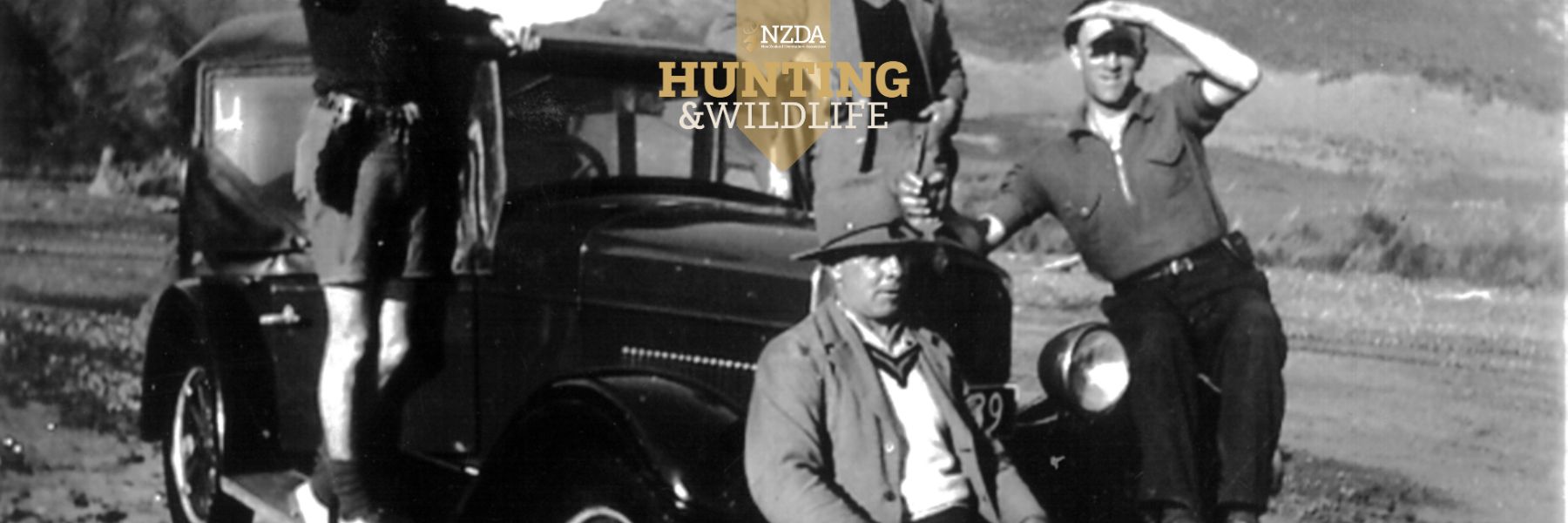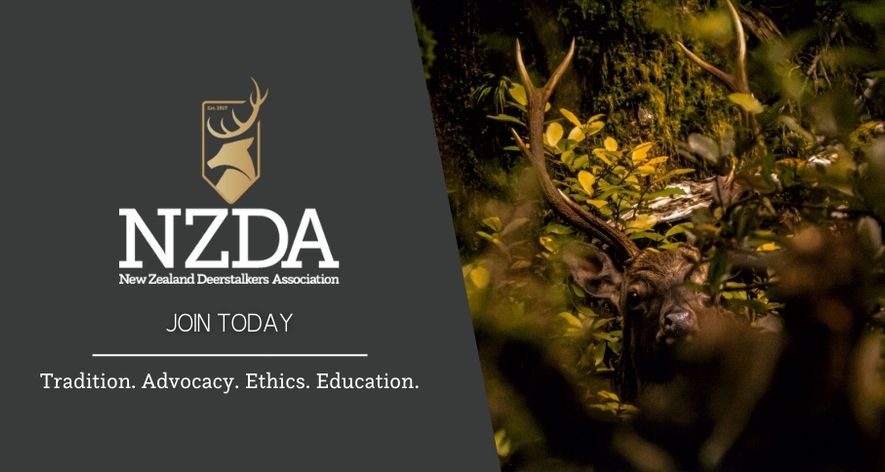Hunting and Wildlife Magazine - Issue 225 - Winter 2024
Words By: Robert ‘Bob’ Badlands
Once upon a time (sounds like a fairy tale, doesn't it), back in the past, surprise, surprise, there were no such items as GPS, spotting scopes, special bipods, range finders, night vision scopes, PLBs.
If you were into hunting in the early days, it was using what was available from ex-Army Stores, and we did have some excellent homemade maps.
I grew up in a hunting family. My first experience of the outdoors was camping in the late 40s, at the age of 11 years at Butterfly Creek, at the back of Eastbourne in Wellington. I have been involved in hunting for 80 years since. But on looking back, I have seen so many changes,-for instance, there was no communication or very few 4WD vehicles back in the day.
Most of my hunting area was the lower North Island, and our transport was a Morris 1100 or an Austin A40. We sometimes even used a bike.
We hunted all year round, usually at weekends, especially during the roar. My brother and I used the family .22 rifle from an early age, and at 16, I bought a fully wooded ex-military 303 with a ‘permit to procure’.
I remember the Petone policeman recording the rifle's serial number incorrectly because he couldn't tell if it was a nine or a seven.
We bought a few rifles and cut them down to make a pistol grip shape. My father was a good Petone Rifle Club shooter, so our ammo was range cartridges with the nose filed off and a hole drilled in it to help it expand on impact. When we went to the Trentham Rifle Range with Dad, we used to buy 303 cartridges at 9/6d (that’s 9 shillings and 6 pence) for 100 rounds, but when we were out hunting with him, we only got one round, so we would make sure we used it correctly.
My first pack was a sugar bag with a stone in each corner and a rope from each corner to the top, which could go over your shoulders and be tied at the top. We also saved every 25lb flour bag to carry the meat in. We later got muslin cloth, which could take a deer's back leg and be hung in a tree to cool off, and the blowflies' eggs could be scrapped off easily.
Our most used shooting spot had a tin hut beside a cattle yard. This had a concrete floor but was in a very windy spot, so the loose iron flapped all the time. Covers over the broken windows let the wind enter. It had a large fireplace, and my father cooked on an open fireplace with a large fry pan and two billies hanging off hooks. Wires were hanging everywhere, and wet socks and gear were hanging all over them to dry out. Often, the wet socks dripped onto the frying pan.
There was a lot of rat activity at night, and on one trip, I took a mouse trap and caught 19 mice as they came out from the back of the fireplace. My clothing was usually my school shirt, an old woollen jersey, and long pants. On some trips, I used to wear my white cricket boots—the studs gave excellent grip on the hills. Later, I used touch rugby boots with a special sole and an oil Japara jacket if it rained.
My knife was homemade from an old hacksaw blade with a wooden manuka handle. The sheath was made using an old dry pigskin. I lost it on one trip, so I had to make another from a cut-down bread knife.
While at Secondary School, I had a hunting mate, Bruce, and we caused a bit of trouble; the new Botanical Gardens in Lower Hutt had some nice flower beds. So, one night, we took our leftover deer legs, made deer imprints in the flower beds, and left a little pile of stag droppings in one corner. The powers that be never found out who did it, but the Forest Service did spend time looking for that deer in the middle of town…
Together we sorted out how to improve the gear and equipment over the years. We were good at hand signals in the hills. Food was usually chops and steak in the frying pan, and gravy with spuds and peas in the billy, and apples and cheese and biscuits on the hill. Food was heavy to carry in our later packs, but we ate well. We had to take cake tins into the huts to put food in, so while we were hunting, the rats wouldn't be able to get into our food. They got into everything, even if the food was hung up out of the way.
I remember a later trip to the West Coast of the South Island, where I took a pair of Paraflex boots, which had rubber soles and were lightweight. They were useless; I slipped the entire trip. I progressed to light leather boots made by Frames in Dunedin and used lots of Tricunis, which saved my life several times.
My later firearm was an early Parker Hale 308, which I had to rebarrell in later years. I also had a heavy pair of 10x50 binoculars, which I used to carry in a homemade pouch on the front of my chest. Bruce and I survived some pretty terrible weather conditions over the years, and we were able to get the early Swandri gear as it became available.
My grandmother knitted me a floppy hat that became a sponge in the rain, and later, I had a Japara Sou-wester, which I still have. We had a two-man tent that leaked at every seam, but later, we made a decent fly to go over it.
Later, Bruce and I got Buller gumboots as hunting footwear. We usually used candles for lighting, and we had to reverse the batteries in the metal torches so they were OK and didn't get used up with the torch going on while in the pack.
Hunting made lifelong friends. Some are not around anymore, but I always carried a camera, a small 120-size film camera with a clip-on flash reflector and a pocket of push-in flash bulbs.
I say now that I never took enough photos. Still, the many I have in my hunting albums bring back my memories and a story with every photo - like the photo of Bruce holding the handle of an axe after the axe head came off, disappearing over his head into the river, never to be seen again, (an axe was a valuable tool around a campsite).
Another photo shows two Kapok sleeping bags hanging in a tree in the Tararua Ranges, one trip full of wet lumps, never to be used again. Another photo shows an enamel mug with a bullet hole; someone got unhappy with it.
Well, so much for the good old days. When I think about it, all I want from the "Good Old Days" are those legs that could walk forever and those seemingly inexhaustible lungs. As I read the Hunting and Fishing monster catalogue, I muse on how life has changed.
Electronic or print copies
Members receive an electronic version by email but printed copies can be ordered (for a print and postage fee) which will be delivered to your home.
To order printed copies visit our NZDA Shop at www.nzda.shop
Read Previous Editions Online
Read the historic editions online for free now. Browse here.
Write for Hunting and Wildlife



